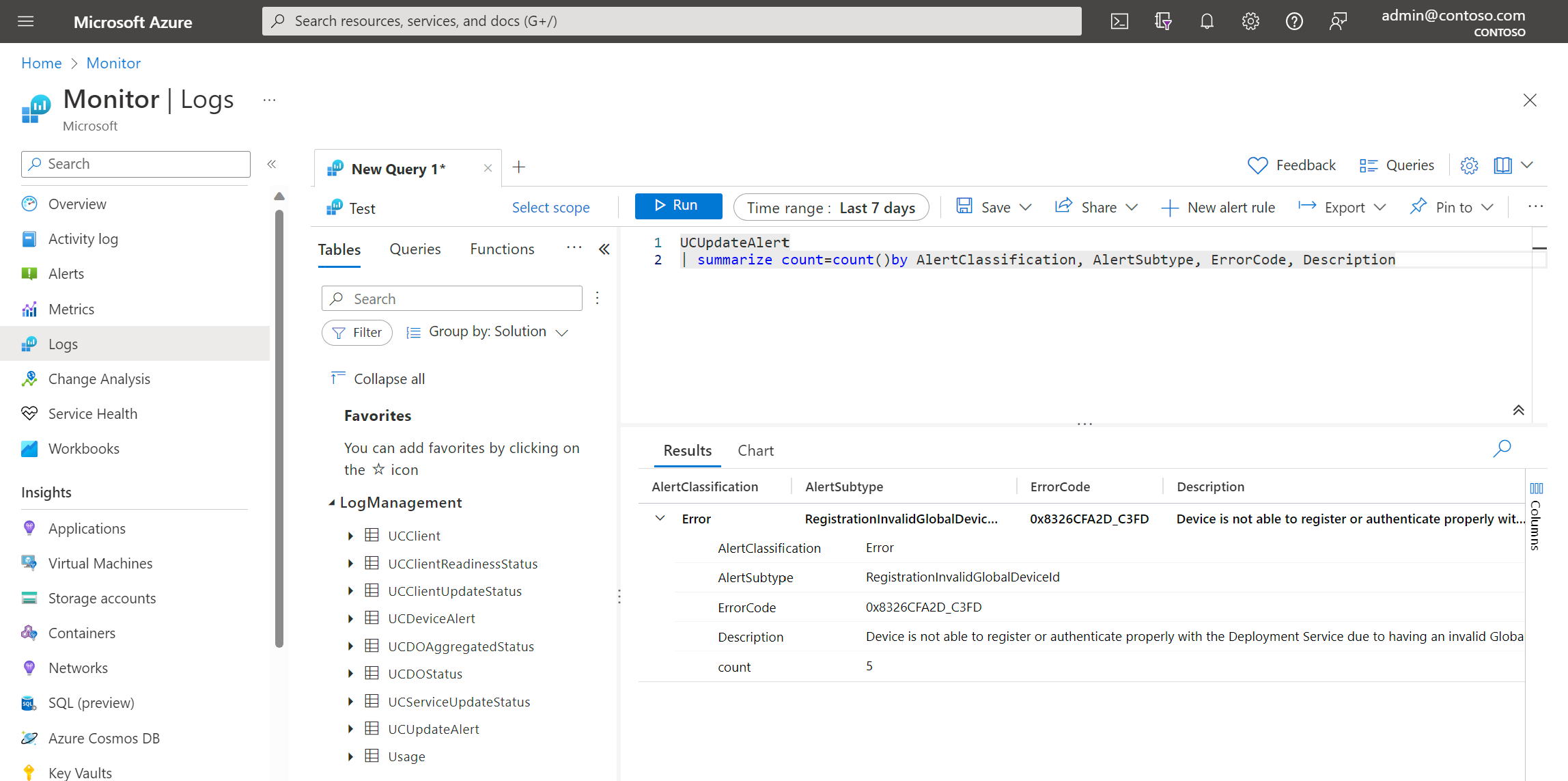Use Windows Update for Business reports
In this article, you'll learn how to use Windows Update for Business reports to monitor Windows updates for your devices. To configure your environment for use with Windows Update for Business reports, see Enable Windows Update for Business reports.
Display Windows Update for Business reports data
- Sign into the Azure portal.
- In the Azure portal, type Log Analytics in the search bar. As you begin typing, the list filters based on your input.
- Select Log Analytics workspaces.
- Select the workspace that you use for Windows Update for Business reports.
- Select Logs under the General group in your workspace.
- If the Always show Queries option is enabled in Log Analytics, close the query window to access the schema.
- Under Schemas and filter, select Group by: Solution and then expand the Log Management schema. If the Group by: Category is selected, the schema is listed under the Other category.
- Use the Windows Update for Business reports schema for custom Kusto (KQL) queries, to build custom workbooks, or to build your own solution to display the Windows Update for Business reports data. For example, you might query the data to review information for different types of alerts in the past 7 days and how many times each alert occurred.
UCUpdateAlert
| summarize count=count() by AlertClassification, AlertSubtype, ErrorCode, Description
Data latency
Windows Update for Business reports uses Windows client diagnostic data as its data source. After you add Windows Update for Business reports and appropriately configure your devices, it could take 48-72 hours before they first appear.
The data powering Windows Update for Business reports is refreshed every 24 hours, and refreshes with the latest data from all of your organization's devices that have been seen in the past 28 days. The entire set of data is refreshed in each daily snapshot, which means that the same data can be ingested again even if no new data arrived from the device since the last snapshot. Snapshot time can be determined by the TimeGenerated field for each record, while LastScan can be used to roughly determine the freshness of each record's data. Device connectivity to the internet and generally how active the device is influences how long it will take before it appears in Windows Update for Business reports.
| Data Type | Data upload rate from device | Data Latency |
|---|---|---|
| UCClient | Once per day | 4 hours |
| UCClientUpdateStatus | Every update event (Download, install, etc.) | 24-36 hours |
| UCServiceUpdateStatus | Every update event (Download, install, etc.) | 24-36 hours |
| UCUpdateAlert | Every event | 24-36 hours |
| UCDeviceAlert | Every event | 24-36 hours |
| UCClientReadinessStatus | After Windows 11 readiness assessment | 24-36 hours |
| UCDOStatus | Download Events | 24-36 hours |
| UCDOAggregatedStatus | Download Events | 24-36 hours |
Working with Azure Monitor Logs
Windows Update for Business reports is built on the Azure Monitor Logs platform. All Windows Update for Business reports-related data is collected in a Log Analytics workspace, where the data is available for querying. Understanding the Azure Monitor Logs tools and features at your disposal, all integrated within Azure portal, can deeply enhance your experience and complement Windows Update for Business reports.
See the following Azure Monitor Logs articles to learn how to:
- Query log data effectively in Azure Monitor Logs.
- Create and share dashboards of data in a Log Analytics workspace.
- Set up alerts in Azure Monitor to always stay informed about the critical issues you care about most.
